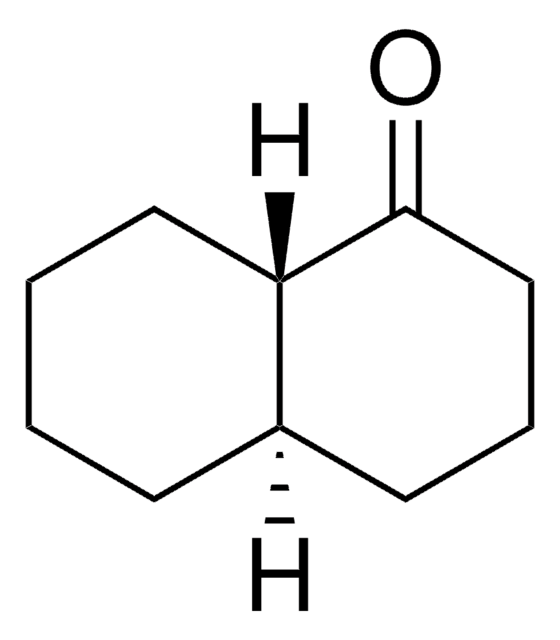If this product has an expiration or retest date, it will be shown on the Certificate of Analysis (COA, CofA). If there is no retest or expiration date listed on the product's COA, we do not have suitable stability data to determine a shelf life. For these products, the only date on the COA will be the release date; a retest, expiration, or use-by-date will not be displayed.
For all products, we recommend handling per defined conditions as printed in our product literature and website product descriptions. We recommend that products should be routinely inspected by customers to ensure they perform as expected.
For products without retest or expiration dates, our standard warranty of 1 year from the date of shipment is applicable.
For more information, please refer to the Product Dating Information document: https://www.sigmaaldrich.com/deepweb/assets/sigmaaldrich/marketing/global/documents/449/386/product-dating-information-mk.pdf
158127
Paraformaldehyde
powder, 95%
Synonym(s):
Polyoxymethylene
About This Item
Recommended Products
vapor density
1.03 (vs air)
Quality Level
vapor pressure
<1.45 mmHg ( 25 °C)
Assay
95%
form
powder
autoignition temp.
572 °F
expl. lim.
73 %
mp
120-170 °C (lit.)
density
0.88 g/mL at 25 °C (lit.)
storage temp.
2-8°C
SMILES string
[O-]#[C+H2]
InChI
1S/CH2O/c1-2/h1H2
InChI key
WSFSSNUMVMOOMR-UHFFFAOYSA-N
Looking for similar products? Visit Product Comparison Guide
General description
Signal Word
Danger
Hazard Statements
Precautionary Statements
Hazard Classifications
Acute Tox. 4 Inhalation - Acute Tox. 4 Oral - Carc. 1B - Eye Dam. 1 - Flam. Sol. 2 - Muta. 2 - Skin Irrit. 2 - Skin Sens. 1 - STOT SE 3
Target Organs
Respiratory system
Storage Class Code
4.1B - Flammable solid hazardous materials
WGK
WGK 2
Flash Point(F)
Not applicable
Flash Point(C)
Not applicable
Personal Protective Equipment
Choose from one of the most recent versions:
Already Own This Product?
Find documentation for the products that you have recently purchased in the Document Library.
Customers Also Viewed
Protocols
Formaldehyde cross-linking protocol detects specific protein interactions with confidence.
Formaldehyde cross-linking protocol detects specific protein interactions with confidence.
Formaldehyde cross-linking protocol detects specific protein interactions with confidence.
Formaldehyde cross-linking protocol detects specific protein interactions with confidence.
-
How can I determine the shelf life / expiration / retest date of this product?
1 answer-
Helpful?
-
-
How is shipping temperature determined? And how is it related to the product storage temperature?
1 answer-
Products may be shipped at a different temperature than the recommended long-term storage temperature. If the product quality is sensitive to short-term exposure to conditions other than the recommended long-term storage, it will be shipped on wet or dry-ice. If the product quality is NOT affected by short-term exposure to conditions other than the recommended long-term storage, it will be shipped at ambient temperature. As shipping routes are configured for minimum transit times, shipping at ambient temperature helps control shipping costs for our customers. For more information, please refer to the Storage and Transport Conditions document: https://www.sigmaaldrich.com/deepweb/assets/sigmaaldrich/marketing/global/documents/316/622/storage-transport-conditions-mk.pdf
Helpful?
-
-
CAN USE TO FIX ZEBRAFISH TISSUE SAMPLES?
1 answer-
Formalin solution (prepared using Paraformaldehyde) has been used to fix adult zebrafish tissue for histological applications.
Citation: Comparative analysis of fixation and embedding techniques for optimized histological preparation of zebrafish by J.E. Cooper et al., Comparative Biochemistry and Physiology Part C: Toxicology & Pharmacology, 208, 38-46 (2018).
https://www.sciencedirect.com/science/article/pii/S1532045617302089
.
There are likely many other citations in the literature for this application for Paraformaldehyde; the above article is a review article that compares several fixative solutions.Helpful?
-
-
What is the difference between formaldehyde and paraformaldehyde?
1 answer-
Paraformaldehyde is the polymeric form of formaldehyde. It is a solid. Formaldehyde is a gas which when dissolved in water gives a formaldehyde solution. Commercially available formaldehyde solutions usually contain 10-15% methanol, which prevents the formaldehyde from forming the polymeric paraformaldehyde.
Helpful?
-
-
What is the Department of Transportation shipping information for this product?
1 answer-
Transportation information can be found in Section 14 of the product's (M)SDS.To access the shipping information for this material, use the link on the product detail page for the product.
Helpful?
-
-
How does Product 158127, Paraformaldehyde, compare to prilled paraformaldehyde?
1 answer-
Prilled has the appearance of small white beads. Product 158127 is a powder, not prilled.
Helpful?
-
-
Do you have a recommended method for preparing solutions of Paraformaldehyde, Product 158127?
1 answer-
Paraformaldehyde does not dissolve but rather can be depolymerized in solution. Depolymerized solutions can be prepared in water with heating to 55-60°C. If necessary, further addition of 1-2 drops of a sodium hydroxide solution may be required. Some protocols suggest that paraformaldehyde should be prepared in buffered solutions such as phosphate buffer or PBS at approximately pH 7.
Helpful?
-
-
How stable are solutions of Product 158127, Paraformaldehyde?
1 answer-
Buffered solutions of 2-4% formaldehyde may be used for up to two weeks if stored in brown bottles at 2-8°C.
Helpful?
-
Active Filters
Our team of scientists has experience in all areas of research including Life Science, Material Science, Chemical Synthesis, Chromatography, Analytical and many others.
Contact Technical Service











